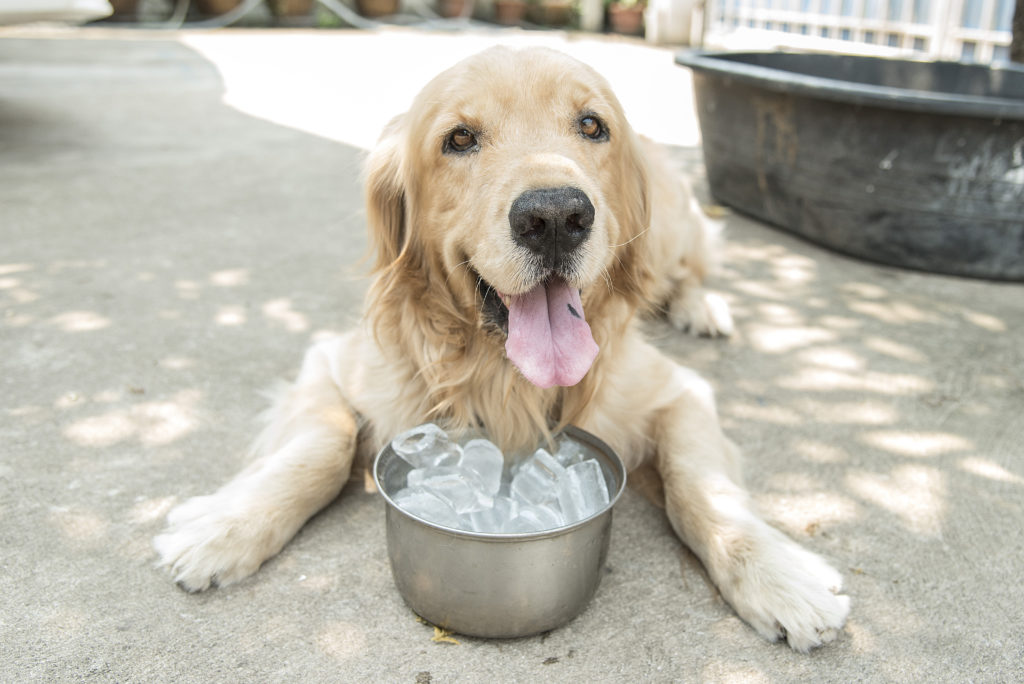Summer in Switzerland, as we know, can be blissfully warm. However, blissful is probably not the word your pets would use to describe a heat wave.
Hot weather can be dangerous, and – at times – outright deadly, for our furry friends. In this post, we take a look at ways you can protect your dogs from the heat during the summer months.
How to manage the heat
- Dogs should always be kept indoors in times of excessive heat.
- When they’re outside, they should have plenty of shade, and always have fresh, cool water available and easily accessible.
- It is important to note that a dog kennel or doghouse is not adequate protection from the heat, as these can become little hothouses during warm weather.
- A dog should never be left alone in a parked car, even for short periods. Temperatures can really soar to dangerous levels in a short period of time.
- Try adding a few ice cubes to your dog’s drinking water to keep it cool for longer. This can also be a refreshing treat, and great for dogs to crunch and chew, to stay hydrated and cool.
- When the weather is hot, dogs should only be walked early in the morning and late in the evening. Avoid playing energetic games that involve running and other physical activity during the hottest part of the day.
- You should also not walk your dog on the pavement, on concrete or asphalt in hot weather, as the pavement can burn and blister your dog’s paws.

Warning Signs
Unlike us, dogs do not sweat from the body. Instead, they release heat by panting, and through sweat glands in their nose and feet. If they are unable to discharge enough body heat in this way, the body temperature rises.
A dog’s normal body temperature is between 100.5˚F and 102.5˚F (38˚C and 39.2˚C) . When the dog’s body temperature exceeds 104˚F (40˚C), it’s an emergency. By 106 ˚F (41.1˚C), there is likely to be irreparable damage to the internal organs, possibly resulting in death.
Signs of heatstroke include:
- Glazed eyes
- Restlessness
- Excessive thirst
- Excessive panting
- Rapid heartbeat
- Fever
- Lethargy
- Dizziness
- Excessive salivation
- Vomiting
- Lack of co-ordination
- A deep red or purple tongue
- Unconsciousness
If your dog displays any of these symptoms, immediately take them out of the heat and sun. Place cool (but not cold) cloths over the body, focusing on the head and foot pads. Do not use ice water or cold water on a dog in this condition, as this will cause the blood vessels to constrict and cause the body temperature to continue to rise.
Call the vet immediately, even if the dog appears better. Offer him cool water to drink, but do not force him to drink it. This water, again, should not be too cold.
Certain breeds, like pugs and bulldogs, are extra sensitive to the heat, as are puppies and senior dogs. Dogs who are overweight are also particularly susceptible.
Take extra care with your dog during the hot weather, being vigilant for signs of overheating, and doing as much as you can to keep them cool and protected. Remember, our four legged friends are covered in warm fur, which only makes them feel hotter. If you’re warm, imagine how your dog must be feeling!
Want to see more topics? Go back to all Articles about Pets